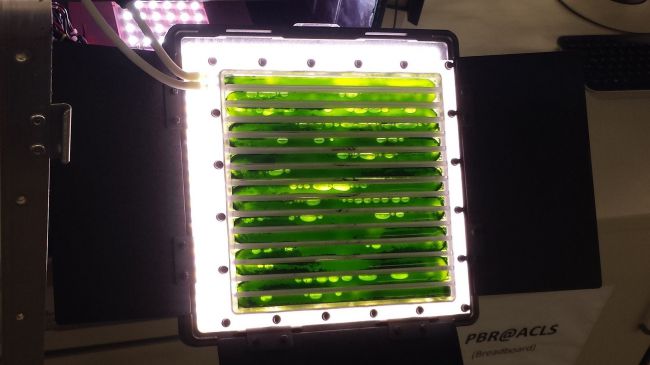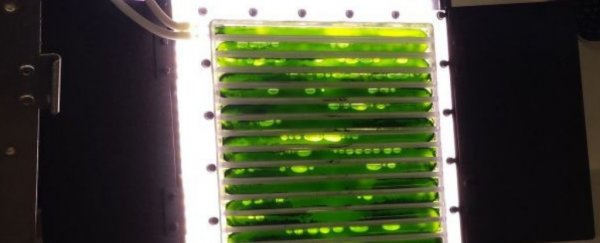There are few things that tether us more to Earth than the food we eat and the air we breathe. Today, humans have the engineering willpower to travel to the Moon and possibly beyond, but when our planet recedes behind us and we slip beyond the reach of human aid, then what?
In the absence of fresh supplies, we would need a closed-loop life-support system, providing us with renewable energy, oxygen, and water. Or, at the very least, something that could sustain a crew of astronauts for longer than a cargo-filled ship.
It's a challenge that NASA is rising to meet. At this moment, flying above us on the International Space Station, astronauts are putting an algae-powered life system to the test.
Known as the Photobioreactor, this German-made experiment commenced just this week, which means it's already out there in orbit, converting astronaut breath and sunlight to oxygen and food.
And so it will continue for six more months, providing breathable air alongside an air-recycling back-up known as the Advanced Closed-Loop System (ACLS).
"With the first demonstration of the hybrid approach, we are right at the forefront when it comes to the future of life-support systems," said the exploration and project leader Oliver Angerer in a statement for the German Aerospace Center (DLR).
"Of course, the use of these systems is interesting primarily for planetary base stations or for very long missions. But these technologies will not be available when needed if the foundations are not laid today."
 (IRS Stuttgart)
(IRS Stuttgart)
The Photobioreactor is still far too small to oxygenate all the passengers on board (the device is just two metres wide and one metre tall), but the researchers have big dreams for their invention.
The ACLS sucks some of the carbon dioxide out of the cabin and extracts methane and water from it, the latter of which is then fed back through the system into an electrolysis process that produces oxygen.
At the same time, the Photobioreactor is also churning through some of that CO2, generating oxygen alongside the ACLS output.
The researchers hope that one day this hybrid system will provide constant breathable air in space, and maybe even food. In fact, they estimate that an astronaut could get up to roughly 30 percent of their daily food intake from the system they have now - if they were game enough to partake in some of this high-protein 'edible biomass', of course.
The unsung hero in this setup is the microalgae Chlorella vulgaris, housed inside the Photobioreactor. This photosynthetic microbe has an extremely thick cell wall with mechanical and chemical protection to boot. As such, the microorganism is extremely resilient.
"The small aquatic organisms in the reactor use the principle of photosynthesis for the production of oxygen, needing only light and some nutrient solution for this purpose," the statement from DLR explains.
"Another strength of the greenish freshwater algae is that it is a suitable form use as food. The further processing of the emerging biomass is not examined in the current experiment, but it would be possible in principle."
So, astronauts on the space station still have their work cut out for them, but this bioreactor is a promising start - we can't wait to see what the results after the next six months will bring.
